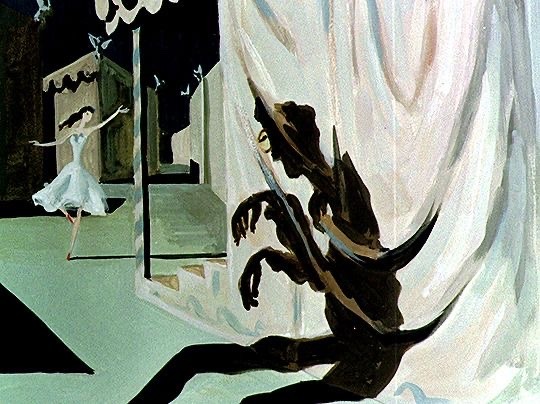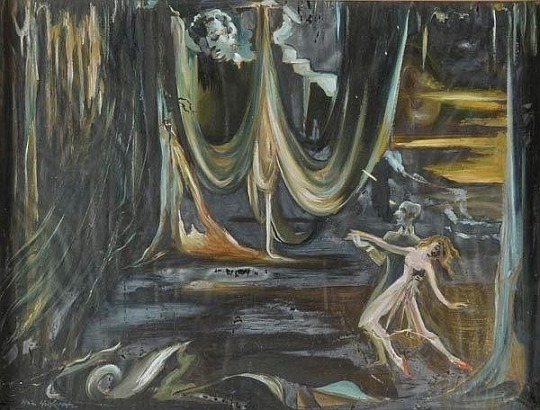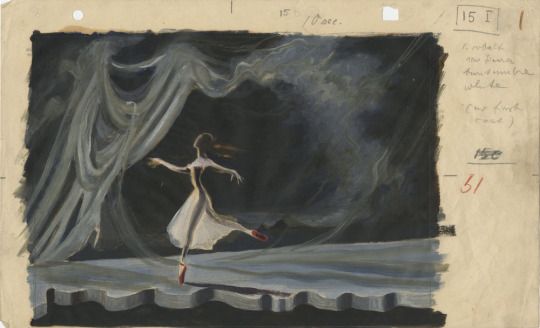#hein heckroth
Explore tagged Tumblr posts
Text






“Time rushes by, life rushes by, love rushes by, but the red shoes dance on…”
The Red Shoes (1948), dir. Emeric Pressburger & Michael Powell
#the red shoes#the red shoes 1948#michael powell#emeric pressburger#the archers#cinematography#classic film#ballet#hein heckroth#moira shearer#1940s#old hollywood
221 notes
·
View notes
Text
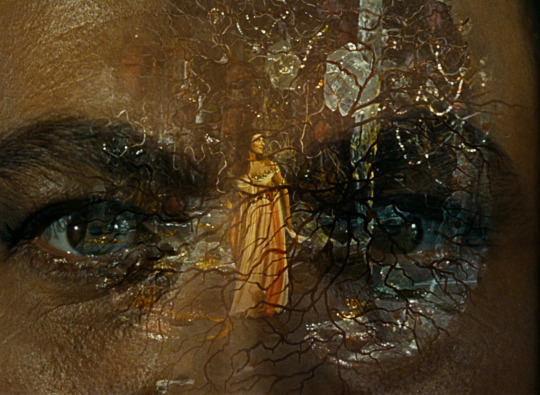
Michael Powells farbenfrohe Ausdeutung der schaurigen Serienmörder(hurrah!)-Oper Herzog Blaubarts Burg für den süddeutschen Rundfunk gibt es jetzt spektakulär vom Britischen Filminstitut restauriert, verglichen mit dem rotteligen Video auf Youtube, das wir zuletzt verwendet haben (aber schauen sie hier die Bildchen) erweist sie sich jetzt viel deutlicher als das unvergleichliche Wunderwerk, das sie ist. "Das Auge hört zu", wie Paul Claudel prächtig formuliert, sagt die Wikipedia.
#Herzog Blaubarts Burg#Norman Forster#Ana Raquel Satre#Film gesehen#Michael Powell#Oper#Béla Bartók#Hein Heckroth
0 notes
Text












"The title ballet sequence took six weeks to shoot and employed over 120 paintings by Hein Heckroth. The dancing newspaper was achieved through careful cutting and use of wires." The Red Shoes (1948) dir. Michael Powell & Emeric Pressburger
#The Red Shoes#moviegifs#filmgifs#filmedit#filmdaily#tvandfilmdaily#dailytvfilmgifs#cinemapix#doyouevenfilm#fyeahmovies#dailyflicks#moviehub#filmcentral#junkfooddaily#usergif#usercreate#userentertainments#gif#mine#made by me#photoset#gifs#gifset
900 notes
·
View notes
Text


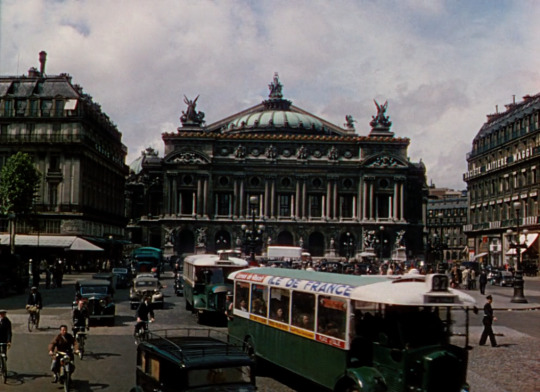
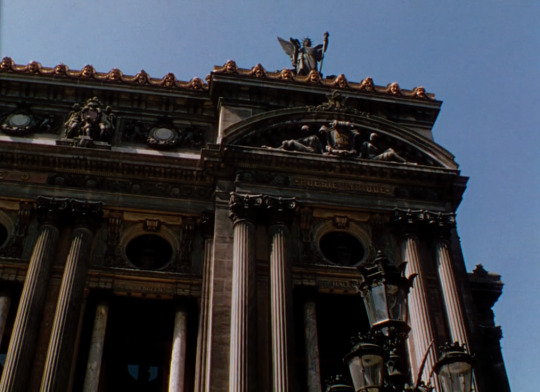







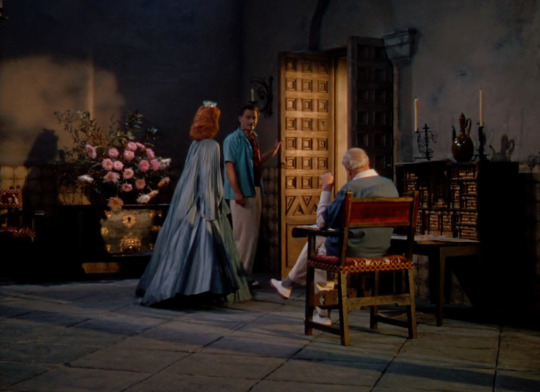

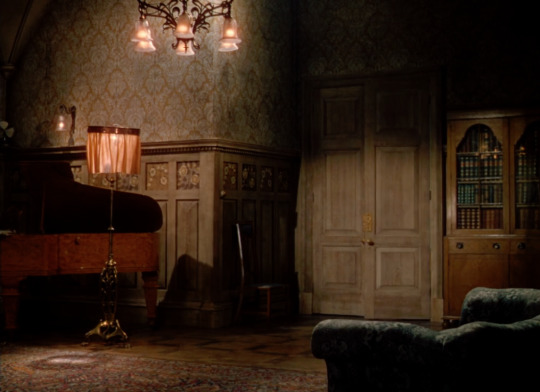

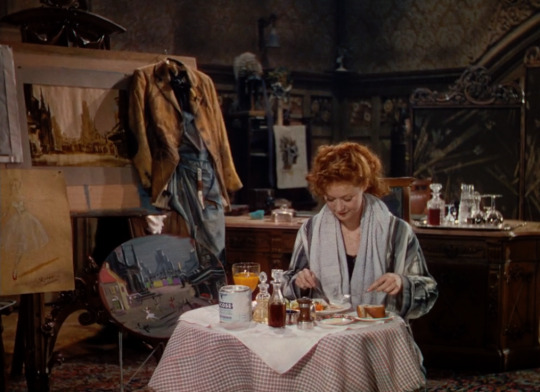









The Red Shoes | 1948
Director: Michael Powell and Emeric Pressburger
Production designer: Hein Heckroth
#the red shoes#moira shearer#adolf wohlbrück#marius goring#michael powell#emeric pressburger#architecture#production design#interior design#interior and films#films#movies#cinematography#classicfilmsource#1940s movies#screencaps
398 notes
·
View notes
Text
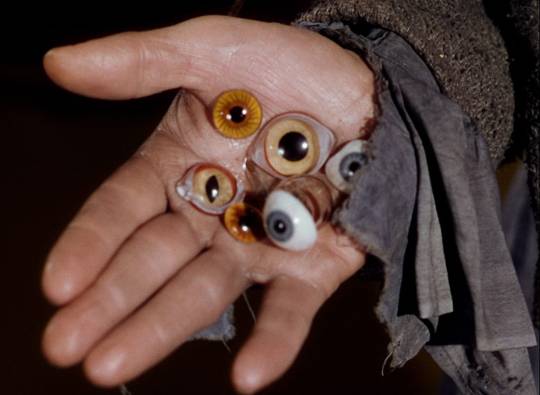
The Tales of Hoffmann (Michael Powell and Emeric Pressburger, 1951)
Cast: Robert Rounseville, Moira Shearer, Ludmila Tchérina, Ann Ayers, Pamela Brown, Léonide Massine, Robert Helpmann, Frederick Ashton, Mogens Wieth, Lionel Harris, Philip Leaver, Meinhart Maur, Edmond Audran. Screenplay: Michael Powell, Emeric Pressburger, Dennis Arundell, based on a libretto by Jules Barbier for an opera by Jacques Offenbach based on stories by E.T.A. Hoffmann. Cinematography: Christopher Challis. Production design: Hein Heckroth. Costume design: Ivy Baker, Hein Heckroth. Film editing: Reginald Mill.
Opera and film are two well-nigh incompatible media, with different ways of creating characters, evoking mood, and telling stories. The handful of good opera films are those that find ways of replicating the operatic experience within a cinematic framework, the way Ingmar Bergman does in his film of Mozart's The Magic Flute (1975), which takes liberties with the original libretto and casts the action in a theatrical setting. For their film of the Offenbach opera The Tales of Hoffmann, Michael Powell and Emeric Pressburger also tinker with the libretto, and with perhaps somewhat more justification: Offenbach didn't live to see his opera performed, and it exists in several variants. Opera companies rearrange and cut its various parts, and even interpolate music from other works by Offenbach. Like The Magic Flute, Hoffmann has fantasy elements that lend themselves to the special-effects treatment available to the movies, and Powell and Pressburger took full advantage. It is usually thought of as a companion piece to their film The Red Shoes (1948), in large part because it used many of the stars of that earlier film, including Moira Shearer, Robert Helpmann, Léonide Massine, and Ludmilla Tchérina, as well as production designer Hein Heckroth. The film version is as much ballet as opera, choreographed by Frederick Ashton, with many of the characters played by dancers whose voices are supplied by singers. The only singers who actually appear on screen are Robert Rounseville as Hoffmann and Ann Ayars as Antonia. Unfortunately, some of the singers whose voices are used aren't quite up to the task: Dorothy Bond sings both Olympia and Giulietta, and the difficult coloratura of the former role exposes a somewhat acidulous part of her voice. Bruce Dargavel takes on all four of the bass-baritone villains played on-screen by Helpmann, but his big aria, known as "Scintille, diamant" in the French version, lies uncomfortably beyond both ends of his range. Rounseville, an American tenor, comes off best: He has excellent diction, perhaps because he spent much of his career in musical theater rather than opera -- though he originated the part of Tom Rakewell in Stravinsky's The Rake's Progress in 1951. He is also well-known for his performance in the title role of Leonard Bernstein's Candide in the original Broadway production in 1956. The film is overlong and maybe over-designed, and it sort of goes downhill after the Olympia section, in which Heckroth's imagination runs wild.
2 notes
·
View notes
Text
Researched Film Analysis ( The Red Shoes )
My chosen film for the film analysis will have to be the film titled" The Red Shoes". Having watched the film, the Red shoes brings up a numerous amount of concepts and ideas surrounding fairytales/myth, animal/human nature as well as psychological theories such as the unconscious desire. The film was created in 1948, so during the post- war period by film - makers Michael Powell and Emeric Pressburger.The film is based on a Hans Anderson fairy tale where a young woman ballerina Vicky is on her own journey to become a well renowned dancer at a prestigious ballet company. However, during this dance journey Vicky has a blooming romance between her 'rising composer' Julian Craster which definitely clashes between the control and harshness of Lermontov who is her dictatorial director. As the film continues, there is a really challenging and difficult decision for Vicky herself because her director makes her choose between her passion with her lover Julian and her love for ballet as he displays intense jealousy over her relationship with him. She ends up marrying Julian and leaving the dance company however her manipulative director bullies into rejoining her role in " The Red Shoes Ballet". The film tragically ends with Vicky throwing herself into the train tracks from the balcony as she cannot deal with Julian thinking she betrayed him after being forced to pick between 'dancing' or 'marriage'.
The film does definitely portray a huge sense of art versus human nature. This finding comes from the journal of ( Diamond, 2016) which states that the film has a clear narrative which "epitomizes universal anxieties, desires, conflicts and fantasises". From this understanding, it could be viewed that because the film was released in 1948, this was during post-war England where many women at the time returned from the factories they worked at to go home. Considering how women at the time lived in a clearly dominated, male ruled society, it is quite interesting to note how heavily the main character Vicky was influenced with her own experiences with men in the film. To further elaborate this point, Vicky is controlled in the film by men practically most of the film. For instance, Lermontov is in charge of when and how she dances whereas her love interest that was supposedly meant to have her back argues with her; not giving her a chance to explain herself even though her director told her to leave her marriage. This very example illiterates how "the heroine is alternatively positioned as a puppet of 'male collaboration' with homoeroticism and misogyny intersecting". As a women at the time, this would have been uncontrollably difficult for her to speak up to men as they had the ideology that everything they do comes within their own 'power' with women not having a say in anything. It is upsetting that ultimately the two men at the end of the film decided Vicky's fate which highlights the values and ideologies men had of women at the time.
Moreover, there are several moments in the film 'The Red Shoes' where the film directors have created a 'narrative' through the use of props and colour where arguably a women could be "sexualised". For instance, the main character Vicky is portrayed as wearing a lot of dramatic makeup such as (heavy eyeliner, dramatic fake- eyelashes, as well as the use of the colour 'red' on her lipstick). This creates a sense of an element of fantasy in particular an element of dark- fantasy as the audience may feel like they are witnessing a beautiful scene of art-work through the film. These scenes could have been heavily influenced by the art director Hein Heckrorth. Hein Heckroth was an artist who moved to Britain in the 1930's with his jewish wife. who created an astonishing piece of art-work cited as ' Freudian Ballet' where he tried to resemble the ballet sequence. Through this artwork, it could be argued he wanted to tell a story of 'fantasy' because he wanted to bring together choreography, music, art, dance as well as story-telling through the world of the ballerina Vicky. In (Figure 1), Heckroth's sketch includes an oil based painting which uses muted and dark colours of greys and yellows in which the ballerina looks like she is dancing on a 'log'. The dark colours on the side of the ballerina could hint at an eerie and fantasy like state which could suggest that the ballerina feels like she is in the 'state of her own reality'.
Furthermore, there could be more elements of fantasy in the film itself based of the concept of the films main theme“ballet”. After all, it is one of the main components of the film as ( McLean, 1988) states that “the characters love their art and the theatre so much that they allow it to control their lives”. It could be said that something like this is considered upmost a ‘fantasy’ because it is unlikely that someone’s interest would have such an impact on society in our world at present. In the film, in order to bring the ballet to life, ‘fantasy’ elements were definitely used in which “magic is commonplace but created with real things - wood, paint, fabric, sweat, and muscular effort”. This could illiterate that in order for the production of the ballet to appeal to audiences, these elements had to be present in order to make the visuals become realistic and relatable when watching. Usually, fairy- tales are deemed to be something that are associated with children, for instance especially Han’s Anderson’s fairytales which try and capture a child’s imagination whilst teaching a valuable and insightful life lesson.
In regards to “The Red Shoes” though, the film was made in 1948, a time where film- makers such as Powell had a huge influence in the making of the film ( male- dominated society). Zipes (1997) indicates that fairytales were “never categorized as a children’s genre” so the topics that were willing to be discussed in ‘The Red Shoes’ wouldn’t distinguish between childlike and adult like topics so it is predominately up to the viewers to see how they interpret it. A good example in the film would be how Vicky and Julian fell for each other through their shared love for dance/ composing. Realistically, if they never shared similar passions, it would be quite unlikely that something would have blossomed beyond that. Again, there is a sense of lust overtaking Vicky’s desire to dance which has strong links to us as human’s having that predisposition of having psychological desires that can’t be controlled at times. The film could offer an insightful lesson for children even because it teaches us that life can be both rewarding and challenging at times as not everything can be handed out without any consequences. For Vicky, it was either her desire for dance or choose a long lived love with her husband and perhaps because she couldn’t find a psychological balance between both, she tragically had no other reason to live hence her unexpected “death”.
There is definitely a huge element of Sigmund Freud’s psychological theory in the film especially by referring to the ‘uncanny’. This can be interpreted through ( Sigmund Freud, 2003) as something that “belongs to the realm of the frightening of what evokes fear and dread”. (In Figure 2), one shot in the film which is significant to this idea would be the shot of Vicky’s legs which feature the ballet shoes she heavily treasures. These could bring out a sense of the uncanny because it is those ‘very shoes’ that define her tragic fate at the end of the film. It is obvious that the shoes itself don’t carry a constant state of ‘fear’ which lead to the tragic demise of the main character, but it is the idea that this life-long passion cannot get rid off, suggesting it was something that was most likely given as her ultimate goal in her lifetime. The ‘uncanny’ in this sense is something that “has been repressed and then reappears,and everything uncanny satisfies this condition”. In reference to “The Red Shoes”, it could allude that Vicky’s love for ballet may have become repressed meaning that, there was an internal conflict in her head between the two men as she didn’t really know how to make a rational decision without realising ballet is her true ‘passion’ . Essentially, her love for Julian was so unstoppable that she couldn’t distinguish between desire or true passion. There is a notable camera movement in the film where Vicky is captured twirling and spinning around with a long shot which echoes how the majority of the film is based on the importance of dance as well as highlighting that her passion for dance was in fact a “reality”. At the time this film was shot, it would have been expected to conform to societal norms hence why Vicky probably felt like she had to obey in authority to Lermontov. Even if she did deep down desire to be with her husband, she as a woman at the time probably felt as if she couldn’t have her own ‘voice’ and ‘choice’ anyway.
Overall, the film “The Red Shoes” presents different ideas and thoughts as to how there are elements of fantasy, the unconscious as well as fairytales well. In my opinion, there is definitely the most ‘ unconscious desire’ shown because the outcome of the ending of the film would have been so much more different if there were no ‘ love interests’. Evidently, this could have been a film all about just her passion for dance thus the internal conflict between her lover and passion adds an interesting dynamic into the film. These kind of conflicts can happen to anyone in real life events therefore it means that “The Red Shoes” is definitely not just considered a ‘fairytale’ being more impactful than can be realized.
Bibliography/ References:
Center Theatre Group, (2017, August 24), “ How the ‘Red Shoes’ Came to life” ( https://www.centertheatregroup.org/news-and-blogs/news/2017/august/how-the-red-shoes-came-to-life/)
Classiq, (2015, June 24), Costume and Colour in “The Red Shoes”, ( https://classiq.me/costumes-and-colour-in-the-red-shoes )
Diamond, D, (2016), “ The Red Shoes: A fairytale within a Ballet Within a Film”, Psychoanalytic Psychology, 33 (S1), pp. S104-S119) ( https://psycnet.apa.org/doiLanding?doi=10.1037%2Fpap0000071 )
Freud, S, (2003), The Uncanny. London: Penguin ( https://www.sas.upenn.edu/~cavitch/pdf-library/Freud_Uncanny.pdf)
IMDb, (1990-2024), The Red Shoes- Plot/ Summaries ( https://www.imdb.com/title/tt0040725/ )
McLean, A.L (1988), “ The Red Shoes” Revisited’, Dance Chronicle, 11(1)pp.31-83. ( https://www-tandfonline-com.ezproxy.mdx.ac.uk/doi/epdf/10.1080/01472528708568965?needAccess=true)
Shields, Meg, (2014, Oct 14), “ Why the Red Shoes look so damn good”- The Film School Rejects ( https://filmschoolrejects.com/the-red-shoes-visual-legacy/)
The Guardian, (2009, Nov 20), Exhibitions, “ Surrealist artwork from The Red Shoes to go on display” ( https://www.theguardian.com/uk/2009/nov/20/red-shoes-artwork-bfi-southbank)
Zipes, J, (1997), Happily Ever After, Fairy tales, Children and the Culture Industry, London: Routledge ( https://www.routledge.com/Happily-Ever-After-Fairy-Tales-Children-and-the-Culture-Industry/Zipes/p/book/9780415918510?srsltid=AfmBOoqAmRVRT6XXL1hHwwMZTM5rpKztp-aJGC5lTgvqq3xQDBfKN_rF )
Image/ References:
The Ballet Of the Red Shoes Oil Sketch by Hein Heckroth in a new exhibition, (2009), The Guardian, ( Figure 1) ( https://www.theguardian.com/uk/2009/nov/20/red-shoes-artwork-bfi-southbank)
Why ‘ The Red Shoes’ looks so Damn Good (2020), Film School Rejects, ( Figure 2) ( https://filmschoolrejects.com/the-red-shoes-visual-legacy/)
Images:

Figure 1: Oil Sketch The Red Shoes- Hein Heckworth (The Guardian)

Figure 2: Red Ballet Shoes - Why ‘the Red Shoes’ looks so damn good ? ( Film School Rejects)
0 notes
Text





The Red Shoes
(Dir. Michael Powell) art direction by Hein Heckroth
1 note
·
View note
Text

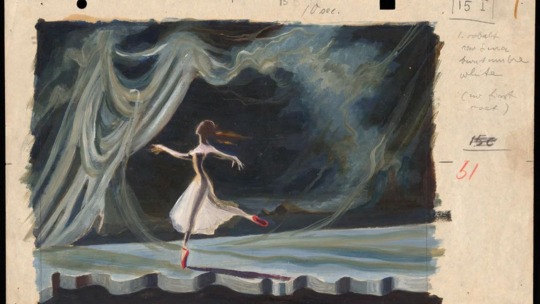
Hein Heckroth, story board from “The ballet of the red shoes”, Harry Ransom Center, 1948
1 note
·
View note
Photo
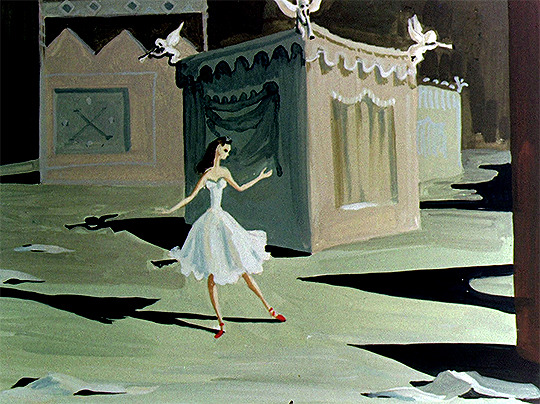

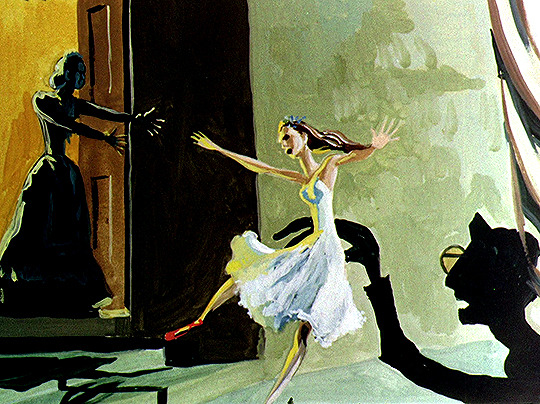
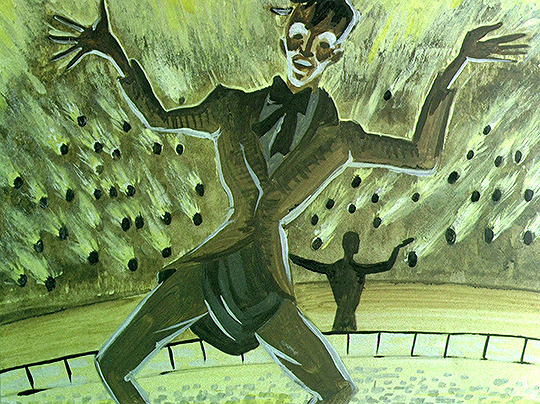
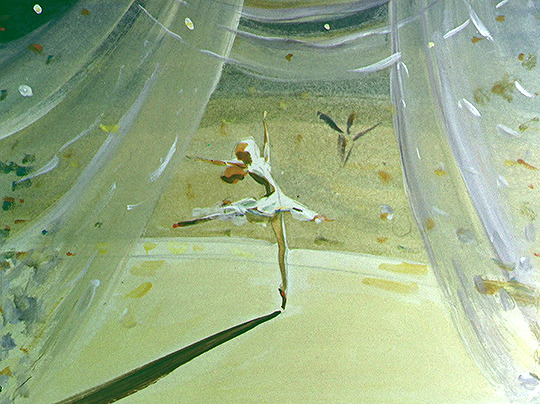
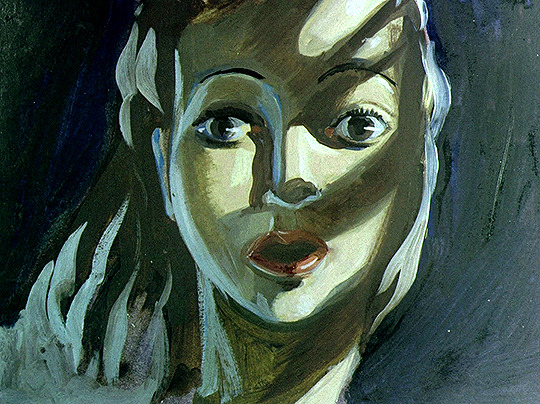
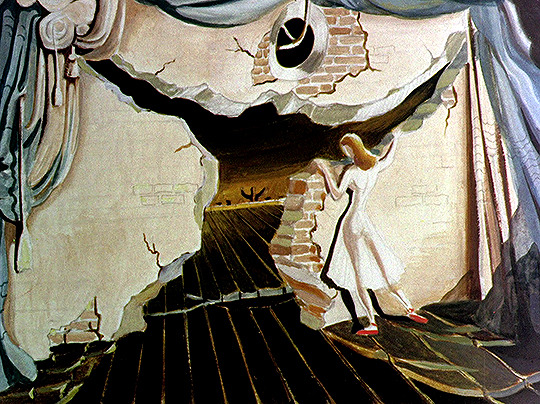
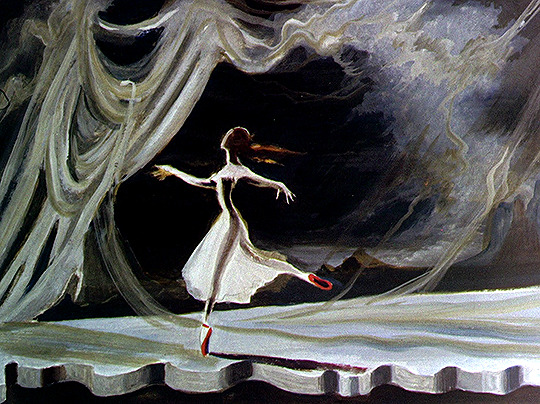
The Red Shoes (1948) dir. Michael Powell & Emeric Pressburger Drawings executed by Hein Heckroth & Ivor Beddoes
#filmedit#ritahayworrth#bergmaningrid#myellenficent#helenspreference#classicfilmblr#classicfilmsource#cinemaspam#the red shoes#michael powell#emeric pressburger#hein heckroth#ivor beddoes#art#1940s#*edits#*mine#this is part 2 :)
7K notes
·
View notes
Photo


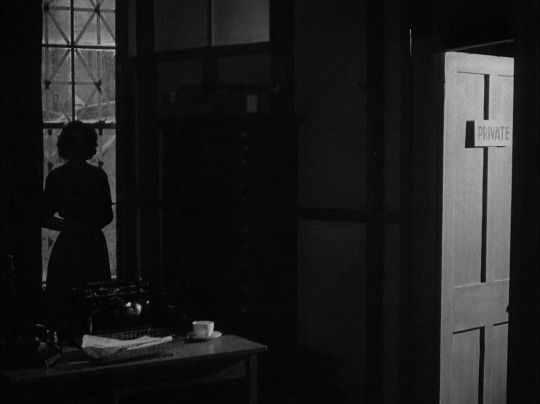
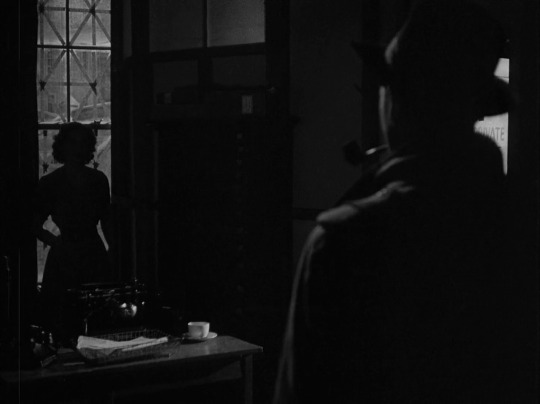




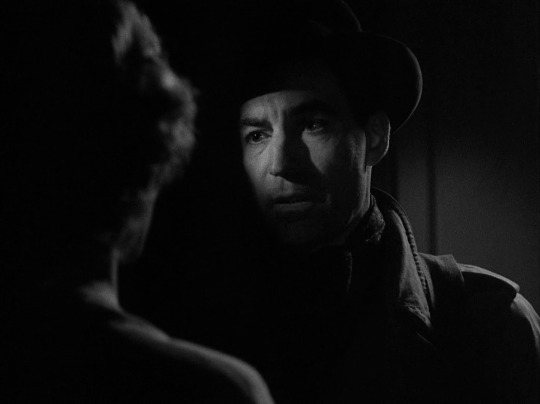

The Small Back Room (Michael Powell & Emeric Pressburger, 1949).
#the small back room#michael powell#emeric pressburger#david farrar#kathleen byron#christopher challis#clifford turner#hein heckroth#john hoesli#josephine boss#nigel balchin
68 notes
·
View notes
Photo

Hein Heckroth, who would receive two Academy Award nominations for his work on “The Tales of Hoffmann” (1951), dir. Michael Powell and Emeric Pressburger
#Hein Heckroth#behind the scenes#The Tales of Hoffmann#film#Powell and Pressburger#Michael Powell#Emeric Pressburger#ballet#opera
1 note
·
View note
Photo
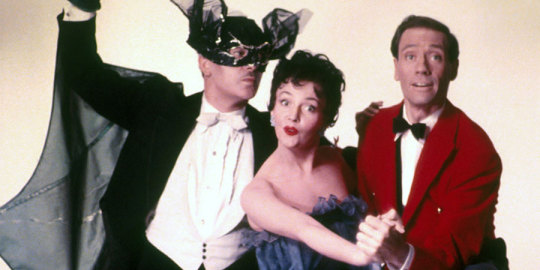
Ein Powell und Pressburger-Musikfilm, den ich noch nicht kannte! Es gibt Gründe dafür, daß er nicht gar so bekannt ist. Oh, Rosalinda!!, eine modernisiserte Fassung der allseits beliebten Operette Die Fledermaus (der deutsche Titel lautet sinnigerweise Fledermaus ‘55) im geteilten Nachkriegs-Wien spielt zwar in schönster unrealistischer Hein-Heckroth-Ausstattung (die allerdings jetzt auch nicht so überzeugend als das aufgeteilte Wien rüberkommt wie beispielsweise das echte Wien in The Third Man), Anton Walbrook ist bewährt charmant, Mel Ferrer hübsch und forsch, Anneliese Rothenberger gibt sich die Ehre, all die schönen Kunstzutaten, und vieles ist wirklich sehr niedlich. Es ist aber insofern etwas unbefriedigend, als Komödie ihnen einfach nicht recht zu liegen scheint. Braucht aber möglicherweise auch eine zweite Sichtung, jetzt wo ich weiß, worauf ich mich eingelassen habe, und mit Champagner.
#Oh Rosalinda!!#Anton Walbrook#Ludmilla Tchérina#Mel Ferrer#Michael Redgrave#Dennis Price#Anneliese Rothenberger#Oskar Sima#Film gesehen#Michael Powell#Emeric Pressburger#Operette#Johann Strauss
2 notes
·
View notes
Text





















"You cannot have it both ways. A dancer who relies upon the doubtful comforts of human love can never be a great dancer. Never." The Red Shoes (1948) || Costume Design by Hein Heckroth
#The Red Shoes#costumesource#costumeedit#costume design#fashioninfilm#fashion in film#moviegifs#filmgifs#filmedit#filmdaily#tvandfilmdaily#dailytvfilmgifs#cinemapix#doyouevenfilm#fyeahmovies#dailyflicks#moviehub#filmcentral#junkfooddaily#gif#mine#made by me#photoset#gifs#gifset#fashionedit
464 notes
·
View notes
Photo



Black Narcissus, 1947
25 notes
·
View notes

